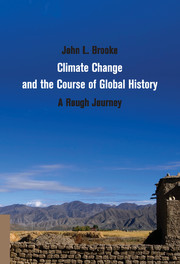Book contents
- Frontmatter
- Dedication
- Contents
- List of Figures and Tables
- Acknowledgments
- List of Abbreviations
- Introduction
- Part I Evolution and Earth Systems
- 1 Geological Time
- 2 Human Emergence
- Part II Domestication, Agriculture, and the Rise of the State
- Part III Ancient and Medieval Agrarian Societies
- Part IV Into the Modern Condition
- Data Bibliography: Full Citations for Data Used in Figures and Tables
- Index
- References
1 - Geological Time
The Court Jester on the Platform of Life
Published online by Cambridge University Press: 05 August 2014
- Frontmatter
- Dedication
- Contents
- List of Figures and Tables
- Acknowledgments
- List of Abbreviations
- Introduction
- Part I Evolution and Earth Systems
- 1 Geological Time
- 2 Human Emergence
- Part II Domestication, Agriculture, and the Rise of the State
- Part III Ancient and Medieval Agrarian Societies
- Part IV Into the Modern Condition
- Data Bibliography: Full Citations for Data Used in Figures and Tables
- Index
- References
Summary
Human history begins with human evolution, and human evolution is grounded in biological evolution, and this is where we must begin. Equally fundamentally, the evolution of life on earth must be seen as inexorably interwoven with its context, the earth itself, and its history. Throughout this book, we explore these interconnections, and they should be spelled out here at the outset: human history is continuous with natural history, and nature indeed has a history.
The central facts of this history are threefold. First, life and the physical constituents of the earth and the sun – a continuum running from the fiery iron of the earth’s inner core out to beyond the reach of the solar wind – have been powerfully interconnected for billions of years. Second, this interaction has been complex and unstable over these billions of years; the earth has been a shifting and volatile platform for life. Third, this instability on a rough world has shaped the specific course that evolution has taken. All earthly life forms owe their very existence to a rough instability and a growing complexity that gives the planet its unique character.
This is an understanding of evolution and the planet earth that has its immediate roots in a wave of scientific advances that began in the 1960s and 1970s. During these decades, the prevailing gradualist orthodoxy gave way to a specific earth history of dramatic moments of interconnected environmental and evolutionary change. At the same time, the boundaries between scientific disciplines collapsed, as biologists, geologists, and atmospheric scientists began to work together as never before to unravel the complex story of the evolution of life and the history of its unique planetary platform, the earth itself. This chapter sketches the emerging synthesis that is developing from this intellectual revolution, but first we need to consider the revolution’s central elements.
- Type
- Chapter
- Information
- Climate Change and the Course of Global HistoryA Rough Journey, pp. 25 - 54Publisher: Cambridge University PressPrint publication year: 2014

